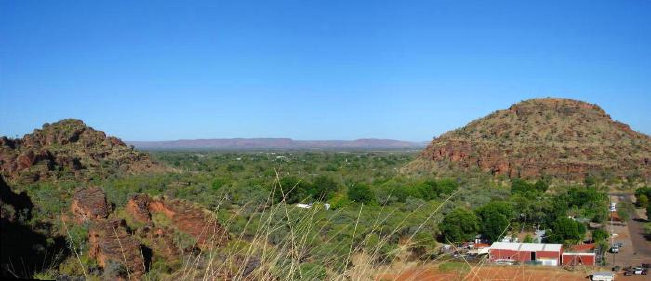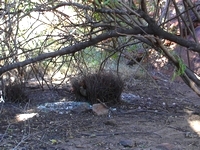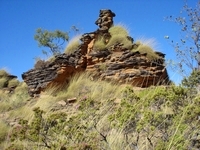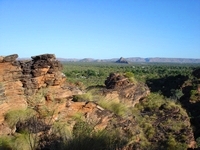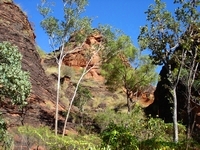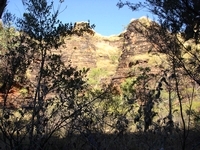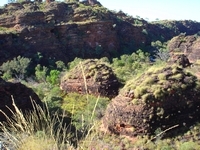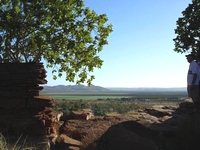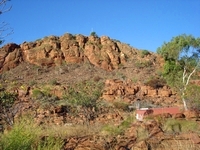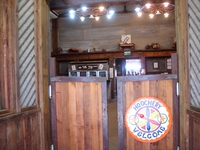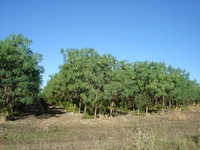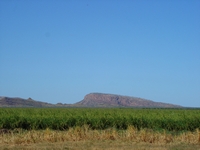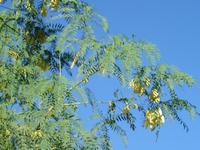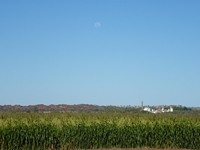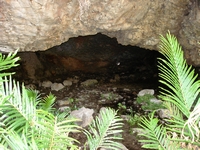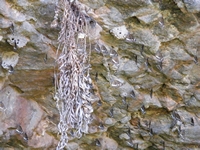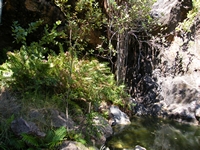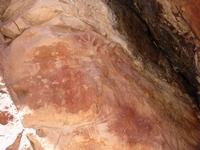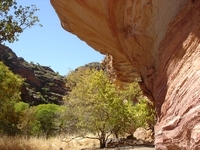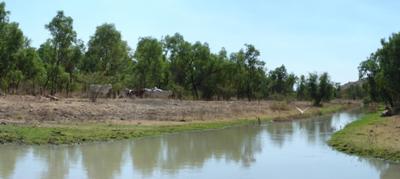Australia So Much to See


Touring the East Kimberley 2008 – we continue sightseeing in and around Kununurra, including Mirima National Park, the Ord River Irrigation
area, Butterfly Cave and find Aboriginal rock paintings and engravings.
We stayed at the
Paths from the caravan park go into Mirima, but it is easier to take the marked walks from the car park within the park. These
include a trail with signage identifying the common trees and shrubs, as well as taking us to various look out points over the town. This view looks across the light industrial area across to the highest point in Kununurra of Kelly’s Knob and over the
A small gap high up in the domes at Mirima gives glimpses of the
This ‘statue’ on the crest was also visible from the caravan park.
On the opposite side of the road to the caravan park is Kelly’s Knob – the highest point in the town where telecommunications aerials
are.
You can’t access
Smoke to the right of the panorama is from clearing old crop residue ready for the next planting.
Mangoes are also a popular crop, again being able to produce fruit at a time that does not compete with
Many of the farms have turned from food crops to the lucrative Indian Sandalwood. This is grown on host trees, often using the
local native Dragon Flower tree. A progression of three species of trees is planted as hosts. Sandalwood is grown for
export mainly by companies who have leased or purchased land along the
Downstream of the Lake Kununurra Diversion dam, a network of gravity fed irrigation channels is fed from
The Hoochery is a popular place to taste rum and rum products.
The
sugar mill, seen here beyond a maize crop, was being dismantled. Rice and cotton were both trialed in the early stages of the
This channel marked the end of the irrigation area north eastern edge. Cattle sat along the edge and a large White Egret enjoyed
the fresh water.
A little way further on an unmarked track, we found the
Hundreds of butterflies are resting on the cool cave ceiling.
To the west of Kununurra we took a narrow and winding track to the

